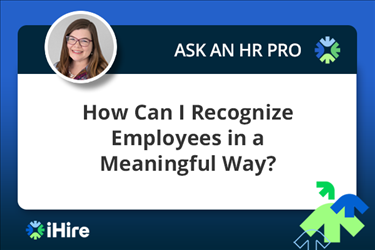- Employer Resources
- |
- Last Updated: June 11, 2025

Elevate & Empower Your Workforce With Intergenerational Mentorships and Reverse Mentorships
Workplaces today bring together a range of generations, from baby boomers to Gen Zers, each contributing unique experiences, viewpoints, and abilities. This blend opens the door to collaboration, learning, and knowledge sharing.
But how can companies turn this diversity and multi-generational workforce into a strength for teamwork, fresh ideas, and growth? The answer lies in intergenerational mentoring and reverse mentoring. These two approaches connect people across age groups, building an atmosphere of ongoing learning and mutual respect.
Traditional mentoring often pairs a veteran professional with a younger colleague for guidance. Intergenerational mentoring, however, sets up a two-way exchange. Younger employees bring fresh perspectives, particularly in areas such as technology and social trends, while seasoned pros share industry insights and leadership know-how.
Before getting into their benefits and how your company can implement them effectively, let’s first define these mentoring models.
What Is Intergenerational Mentoring?
Intergenerational mentoring establishes a framework through which employees from different age brackets swap their knowledge, skills, and perspectives. Traditionally, this meant older, seasoned workers guiding those just starting out.
Now, workplaces lean toward a more balanced exchange, with younger employees adding their own strengths to the mix. That’s where reverse mentoring steps into play. Picture a tech firm in which a longtime manager mentors a new graduate. The manager offers tips on leadership and client relations, while the graduate introduces the manager to the latest technological tools they can use to simplify their workload. This kind of back-and-forth sharpens individual talents and pulls teams closer together.
What Is Reverse Mentoring?
Reverse mentoring takes the idea a step further. Here, junior employees guide their senior colleagues, often in areas where younger employees shine, like digital skills, diversity and inclusion, and emerging workplace trends.
Jack Welch, former CEO of General Electric, popularized this concept in the 1990s, helping leaders adapt to technological changes. Today, organizations across industries adopt reverse mentoring to cultivate a learning mindset, keep their leadership adaptable, and bridge the generational gap. Companies that embrace this approach often benefit from improved communication, innovation, and employee retention.
Consider a junior marketing associate teaching a senior executive how to tap social media to reach younger crowds. The executive gains a strategic edge, while the associate builds their leadership skills and confidence.
This approach flips the old-school rank-and-file thinking on its head, showing that knowledge doesn’t flow just one way. It spreads in all directions, lifting the whole organization.
Benefits of Intergenerational Mentoring
Intergenerational mentoring delivers real value for both individuals and companies, including:
1. Enhanced skill development: Older employees refine their leadership abilities and keep up with current practices, while younger ones gain industry insight, which speeds up their career growth.
2. Increased engagement and retention: Workers who feel recognized through these relationships often show deeper loyalty, reducing turnover.
3. Strengthened diversity and inclusion: Pairing workers across generations also builds respect, counters age biases, and strengthens diversity, equity, and inclusion (DEI) efforts.
Our 2023 survey on ageism in the job search reveals how persistent these biases remain, making intergenerational mentoring a smart countermeasure.

Benefits of Reverse Mentoring
Reverse mentoring offers its own distinct perks, breathing vitality into organizations. Key benefits include:
1. Empowerment of younger employees: Giving younger workers a voice promotes ownership and aligns with what Gen Z wants in the workplace, such as meaningful contributions.
2. Adaptability for senior staff: Learning from their younger colleagues about digital tools and cultural shifts keeps leaders agile in a fast-evolving business environment.
3. Nurtured innovation: Fresh perspectives often ignite creative problem-solving, which helps maintain competitiveness.
4. Expanded diversity awareness: Younger generations often bring heightened cultural sensitivity and diverse viewpoints that can educate senior leaders on evolving social perspectives that are relevant to their business decisions.
5. Flattened organizational hierarchy: These relationships help dismantle rigid hierarchical structures by emphasizing the value of knowledge regardless of position or tenure.
Picture a senior accountant learning data visualization from a junior colleague, revolutionizing how financial reports captivate stakeholders. This advantage ties into the broader benefits of workplace mentorship, such as improved morale and collaboration.
Implementing Intergenerational and Reverse Mentoring Programs
Effective cross-generational mentoring takes some careful thought. Here’s how your organization can make it work.
Define Clear Objectives
Your mentorship initiatives must align with the company’s broader objectives. Establish goals, such as skill-sharing or leadership development, to guide the program’s focus. This step prevents ambiguity from taking hold and sets a purposeful direction for the initiative.
Match Complementary Strengths
Pair participants based on mutual benefits. Thoughtful pairings maximize the exchange of expertise, leading to a symbiotic relationship that refines the capabilities of both parties. For instance, a younger worker’s proficiency in data analytics can complement a senior employee’s experience with strategic decision-making.
Provide Training
Prep participants with sessions that clarify what’s expected and bridge the generational gap. Workshops on active listening and cultural awareness can smooth out potential friction, including differing communication habits.
Monitor Progress
Conduct regular check-ins to assess your outcomes and refine your pairings as necessary. Ongoing evaluation helps leaders identify successes, address challenges, and adjust the program to maintain its effectiveness.
Integrating mentoring into broader career strategies, such as career pathing and latticing, can amplify your retention efforts. Your organization can measure its success by tracking metrics such as employee satisfaction, skill acquisition, and retention rate.
Connect With Qualified Talent Today
Reach Career-Focused Candidates Ready to Grow With Your Team

We Value Your Privacy
Overcoming Challenges in Mentorship Programs
Despite its strengths, intergenerational mentoring faces some roadblocks. Stereotypes, such as older workers resisting change or younger ones feeling entitled, can slow things down. Open dialogue and mutual respect should knock those notions aside.
Scheduling conflicts also often emerge due to varying work styles or life stages. Flexible formats, such as virtual meetings, can efficiently resolve this challenge.
Reverse mentoring sometimes meets pushback, too. Senior employees might hesitate to learn from juniors, feeling like their authority is on the line. Framing the program as a universal growth opportunity can alleviate this concern. If dedication dips, clear goals and recognition should keep the momentum alive. Tailoring the benefits to resonate across generations can boost your program’s overall effectiveness.
Building a Future Together: The Power of Mentorship
Intergenerational and reverse mentoring initiatives are powerful tools for building a more inclusive, innovative, and resilient workforce. Organizations can unlock the full potential of their employees, breaking down generational barriers and promoting mutual learning. These programs boost individual growth and drive organizational success in a competitive landscape.
Companies that lean into these mentoring approaches can maintain a workplace where every generation excels. So are you ready to take the leap?
Explore our Resource Center today for more tips on employee retention.
RELATED RESOURCES
Hiring? You're in the Right Place.
- Reach unique talent: 51% of our candidates aren't using other job boards
- Connect your ATS and get 6x more applications with iHire's apply process
- Get matching candidate resumes sent straight to your inbox
We Value Your Privacy




